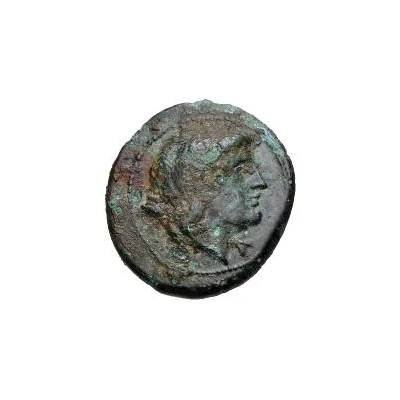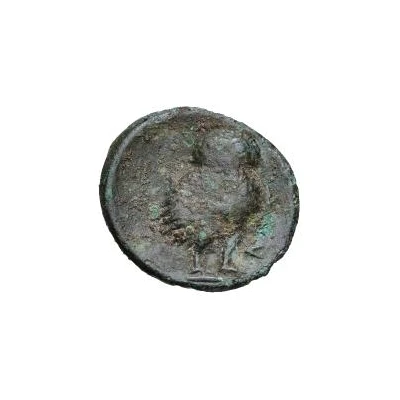5 Units Head of Menrva 301 BC - 250 BC
| Bronze | 2.74 g | 14 mm |
| Issuer | Peithesa (Etruria) |
|---|---|
| Type | Standard circulation coin |
| Years | 301 BC - 250 BC |
| Value | 5 Units |
| Currency | Æ Unit (circa 301-250 BC) |
| Composition | Bronze |
| Weight | 2.74 g |
| Diameter | 14 mm |
| Shape | Round (irregular) |
| Technique | Hammered |
| Demonetized | Yes |
| Updated | 2024-10-09 |
| Numista | N#179626 |
|---|---|
| Rarity index | 100% |
Reverse
Owl facing right.
Edge
Plain
Comment
This coin is typically listed as being from an uncertain Etruscan mint; however, the inclusion of Peithesa on similarly designed coins seems to indicate its location. And while the exact denomination is unknown, the value is of 5 Units.Sambon says these pieces were struck circa 268 BC; however, auction houses and other sources tend to give a broader range.
Interesting fact
The Etruscan coinage system was one of the first to use a standardized system of denominations, with the 5-unit coin being one of the most commonly used denominations. This coin, featuring the head of Menrva (the Etruscan goddess of wisdom, war, and crafts), was used throughout the Etruscan civilization, which flourished in central Italy from the 8th to the 1st centuries BCE. The use of a standardized system of coinage facilitated trade and commerce across the region and helped to establish the Etruscan civilization as a major economic power in the ancient world.

